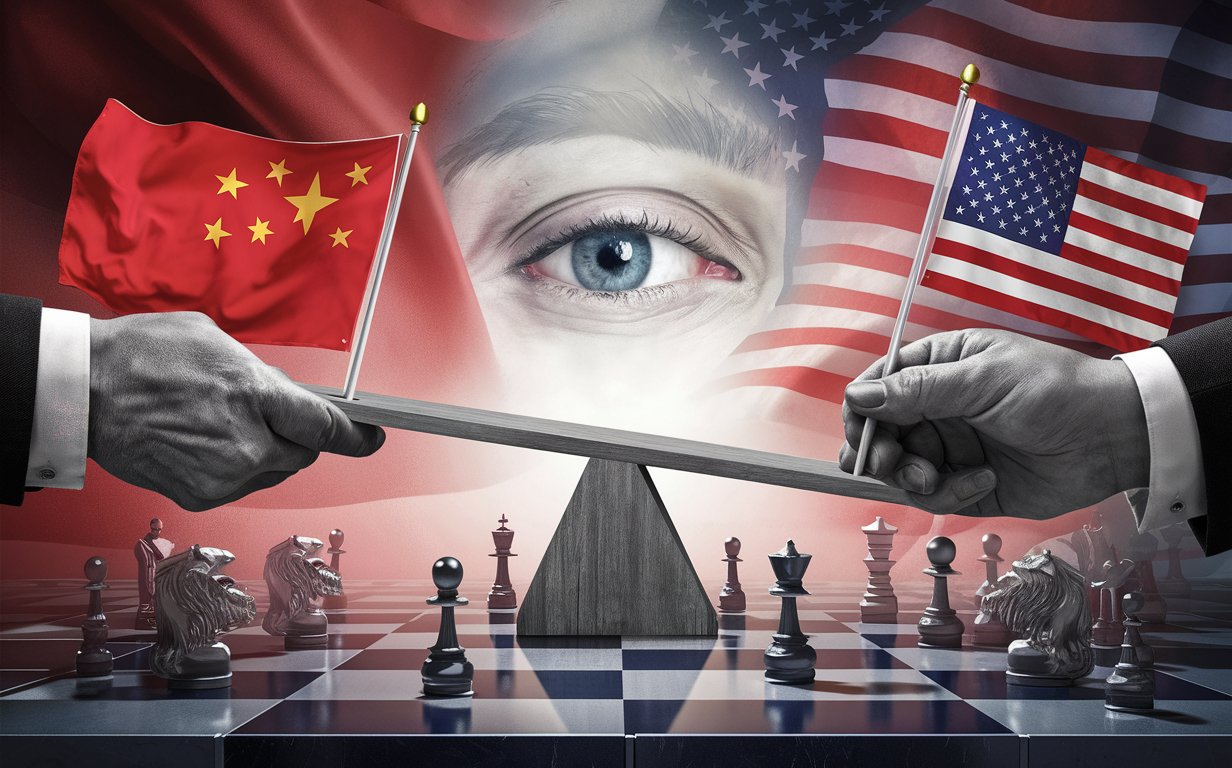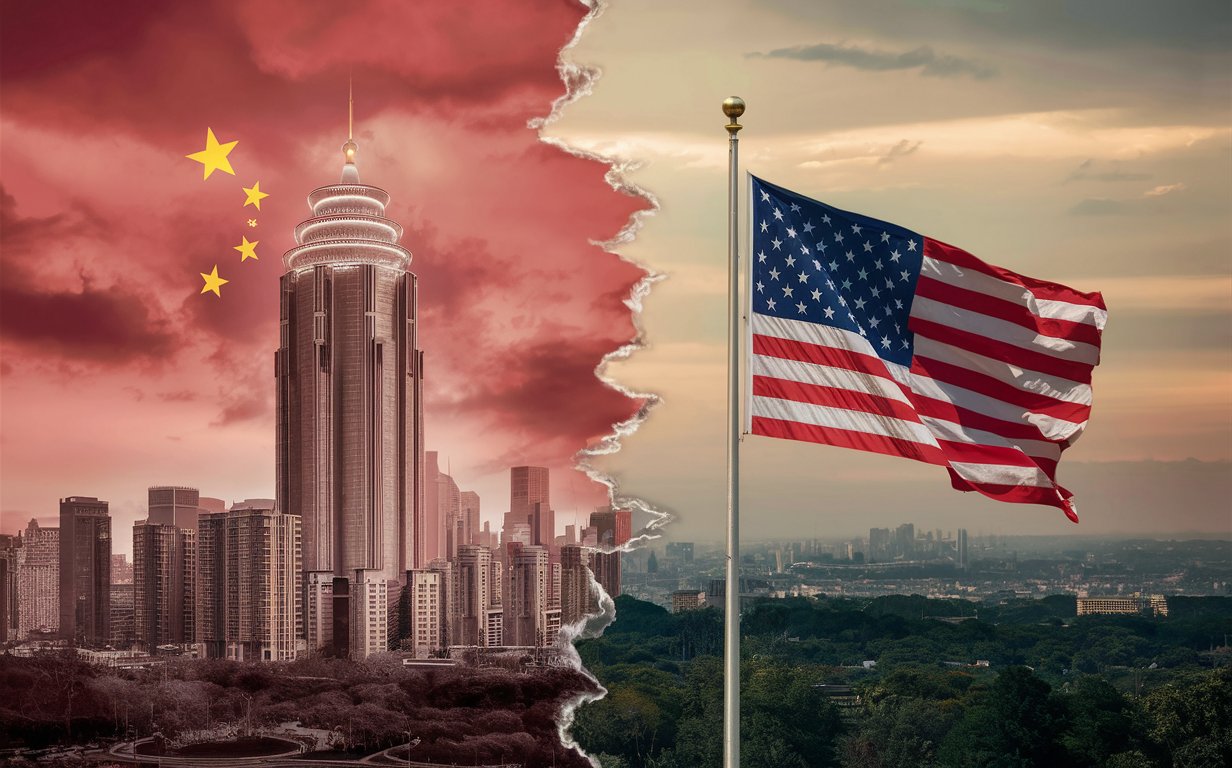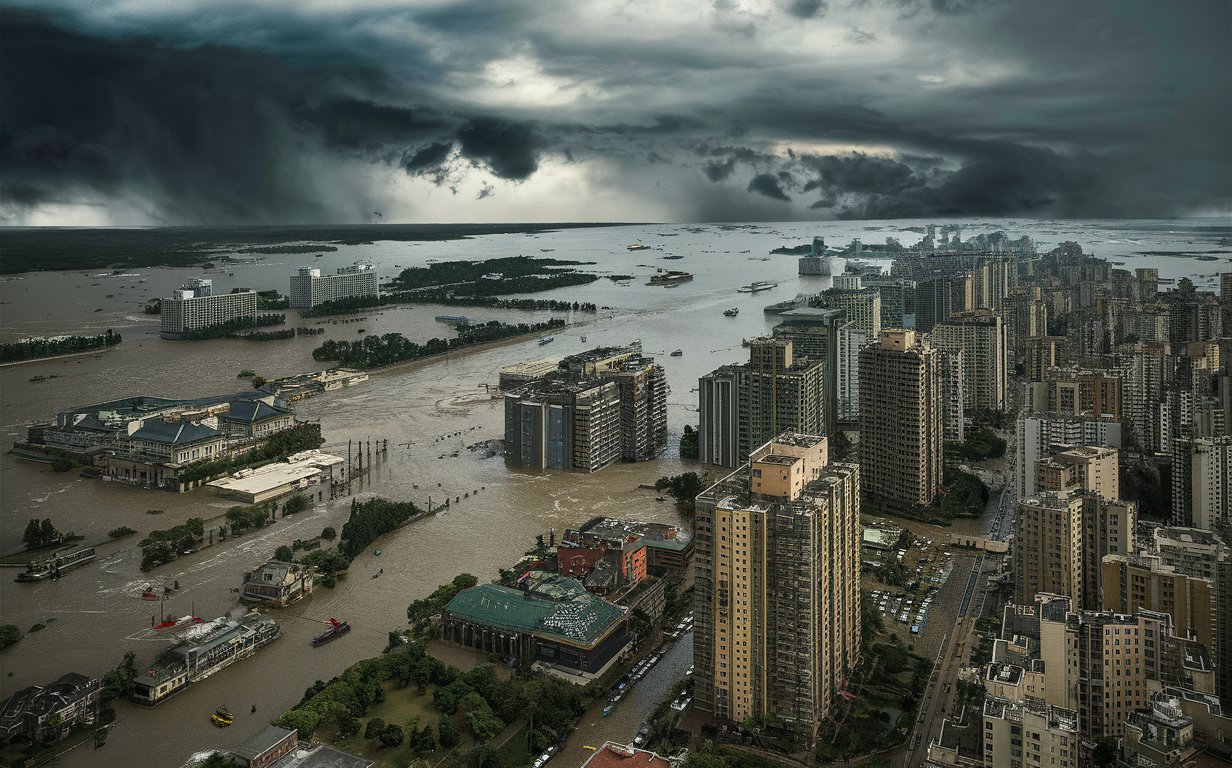China
Global Socio-Economic Impact of Covid-19

The Pandemic originating from Wuhan China has enveloped the whole world and the catastrophe caused by covid-19 is beyond speculation. Schools, Colleges, Universities and business are closed for an indefinite period and the World has gone into self-isolation while the countries imposed lockdown in the world in the severely hit areas to contain the outbreak at massive scale.
The pandemic has affected all the countries especially China, France, Italy, Germany, US, UK, Iran, Egypt and third world countries i.e Pakistan, India, Bangladesh, Sri Lanka and Afghanistan and some African countries.
There are some countries which are severely impacted socially and economically while some countries have sustained moderate impact owing to taking timely preventive measures as per circulated guidelines of WHO and Local Health ministries of respective Countries.
With President Donald Trump clipping the wings of UN’s apex health body by cutting the financial support amid the Global Pandemic, the catastrophe is expected to go from bad to worse as WHO will experience the funds’ shortage that will ultimately contribute to a deep humanitarian crisis.
The world posts a bleak picture already as all business activities have been suspended, the markets have been closed for an indefinite period, the stock markets crashed and the unemployment ratio suddenly jumped to historical high due to covid-19 Pandemic. Even OPEC members have decided to cut the oil production given the pandemic situation.
The Global economy has been severely impacted by the shocks of the deadly virus that prompted companies like Google, Yahoo, Microsoft, Face book, Twitter to ask their employees to work from home to avoid contracting Covid-19.
All the industries have been impacted badly that include entertainment, Sports, food franchise has completely shutdown creating panicking situation all around as once busiest streets and markets have started presenting deserted look.
This global economic warrants that if the early remedy to cure covid-19 is not discovered, the future will be dreadful to predict. The mighty economies such as China, the US, France, Italy, UK, Germany has been seriously impacted by this deadly virus. The situation is haunting the people around the world, bringing misery of greater proportion as compared to Word War II, Ebola, SARS, MERS, Plage and Yaws.
The Daily Wage workers, Private workers, drivers, hawkers, shop keepers and thousands of similar workers have lost their jobs and the opportunity to earn their livelihood. The companies have preferred work from home option for their employees to limit the outbreak and avoid contracting covid-19.
It is alarming that hundreds of workers have filed as unemployed. The lengthy lockdowns have created serious humanitarian and economic crises and the experts are of the view that the circumstances are fast moving towards the global recessions and may take a long time to recover from this catastrophe.
Though China has been able to contain Covid-19 and even lifted restrictions on outgoing flights with some strict SOPs, yet the Covid 19 seems to be an invisible predator waiting for its prey regardless of any region. The virus has impacted all the zones i.e with the cooler, hotter or moderate atmosphere.
The only solution to fight this pandemic is social distancing, maintaining the hygienic environment and avoiding crowdy spaces. The Governments around the world have imposed strict lockdowns and the frontline fighters (Health workers) around the world doing a marvellous job to protect their fellowmen even at the cost of falling prey to this deadly virus.
While fighting this pandemic. Many health workers have been tested positive. Even, some frontline soldiers lost their fight to this pandemic and laid down their lives to secure the future of their respective country.
Education is being imparted through digital platforms as online education is increasing for students. Though students are facing some issues such as the connectivity, Sound quality, Video Quality, yet in this emergency, the Schools, Colleges, Universities and other online course websites are striving to provide some light of Knowledge in these difficult times.
The booming industries such as restaurants, hotels, motels and Aviation have been closed for an indefinite period.
“Coronavirus Pandemic has brought catastrophe in the world impacting all the industries and has caused economic slowdown throughout the world in all the major continents who are thickly populated such as Asia, Europe, the Americas and Africa.“
Unfortunately, despite 151598 deaths worldwide and over 2.21 Million confirmed cases covid-19, all eyes are hooked towards the discovery of vaccine to treat the patients and save their lives. At the moment, only plasma therapy is being conducted and some common medicines are being used such as cough, flu fever-related medicine.
Though human trials have been started by some Pharmaceutical companies, the experts are of the view that it may take one and half year for the vaccine to be available in the market. It is also estimated to be the costliest vaccine ever keeping in view its global implications and rapid speed of pandemic spread in the world.
It is estimated that Europe, Asia, Middle East to suffer a lot especially, Italy, France, UK, Iran and US as the ratio of deaths is higher than other countries especially US where average deaths per days have surpassed all other nations that prompted Trump to cut funding to world health Organization accusing it of mishandling the pandemic and delayed response to mitigate its implication while WHO head has refuted the allegations.
The covid-19 has also impacted Sports, News & Media, Entertainment and Services Industries to the extent that. All the sporting events have been suspended, series and Leagues have been rescheduled and big events such as PSL, IPL, FIFA World Cup, Olympics Games and others have been completely cancelled raising concerns among the players. Even the players are facing the trauma having travel history to the epicentre of Covid-19 Pandemic and tested positive.
The Entertainment industry has been heavily impacted as all the dramas, Films and comedy shooting and recording has been postponed till indefinite period and all the events including concerts have cancelled due to covid-19 and actors have lost the source of living.
“The services industry especially the skilled and non-skilled have been subjected to starvation as all the roadside small business such as Hair Cutting Salons, Cobblers, Gold and blacksmith shops, Electricians, Booksellers, daily wages workers and Masons have lost their living owing to lockdowns globally.“
Finally, the Print and Electronic Media are partially impacted though they are a very vulnerable community as they have been busy in coverage of the pandemic around the world and are prone to contracting the deadly virus due to close contact with Patients at Quarantine Centres and the Health specialists working at the hospital and temporary health centres specially set up for an emergency.
The Print Media has been hit hard as people consider it risky to read a Print copy of newspapers over covid-19 fears and prefer paper or online edition of the newspapers. Hence, such a trend has impacted the Newspaper Sales badly.
On the other hand, electronic media such as News Channels, Radio and Digital Media such as Websites, YouTube are grabbing people’ attention.
The Social Media is also buzzing with Covid-19 updates though Social Media and Silicon Valley companies have asked their employees to work from home and follow the preventive measures these include Twitter, Yahoo, Facebook, Microsoft and Search Giant Google.
The world should be united to fight this global pandemic that is haunting the world. The US should release funds to help WHO work effectively for global health and expedite the process of vaccine discovery as each day will deprive the near and dear ones of the families around the world. With collaborative efforts, the world can win this war against the pandemic.
Analysis
China warns US to choose between cooperation or confrontation: Blinken given ultimatum

According to reports, China has warned the United States that it must choose between “cooperation or confrontation” in their relationship. The comments were made by Yang Jiechi, a senior Chinese diplomat, during a virtual meeting with US Secretary of State Antony Blinken. The meeting was the first high-level talks between the two countries since President Joe Biden took office.

The warning comes amid growing tensions between the US and China over a range of issues, including trade, human rights, and Taiwan. The two countries have been engaged in a trade war since 2018, which has seen both sides impose tariffs on each other’s goods. In addition, the US has imposed sanctions on Chinese officials over the treatment of Uighur Muslims in Xinjiang, while China has been accused of cracking down on democracy in Hong Kong.
The meeting between Blinken and Yang was described as “tough” and “frank” by both sides. While the US has said it wants to work with China on issues such as climate change and the pandemic, it has also called on China to respect human rights and stop its aggressive actions in the South China Sea.
Table of Contents
Diplomatic Ultimatum

China has warned the United States sternly, stating that it must choose between cooperation or confrontation. The ultimatum was delivered by China’s top diplomat, Yang Jiechi, during a virtual meeting with US Secretary of State, Antony Blinken.
Blink en’s Response
Blinken responded that the US is not seeking confrontation with China, but rather wants to ensure that the relationship between the two countries is based on “fairness, reciprocity and respect for international rules and norms.” He also emphasised the importance of addressing human rights issues in China, including the treatment of Uyghur Muslims in Xinjiang.
US-China Relations
The relationship between the US and China has been strained in recent years, with both countries engaging in a trade war and accusing each other of human rights abuses. China’s warning to the US comes as tensions continue to rise between the two nations.
It remains to be seen how the US will respond to China’s ultimatum, but the relationship between the two countries will be a key issue in international relations for the foreseeable future.
Areas of Cooperation and Confrontation

China and the United States have a complex relationship, with areas of both cooperation and confrontation. The following are some of the key areas where the two countries have worked together and where they have faced challenges.
Trade and Economic Policies
China and the United States are two of the world’s largest economies, and their trade relationship is critical to the global economy. However, the two countries have had a long-standing trade dispute, with the US accusing China of unfair trade practices, intellectual property theft, and currency manipulation. This has led to the imposition of tariffs on both sides, which has hurt businesses and consumers in both countries.
Military and Security Issues
China’s growing military power and territorial ambitions have raised concerns in the United States and other countries in the region. The US has accused China of militarizing the South China Sea, and has increased its military presence in the region in response. The two countries have also clashed over Taiwan, with the US supporting the island’s independence and China claiming it as part of its territory.
Human Rights and Cybersecurity
The US has raised concerns about China’s human rights record, particularly in relation to Tibet, Xinjiang, and Hong Kong. China has been accused of suppressing dissent, cracking down on religious and ethnic minorities, and violating international human rights standards. The two countries have also clashed over cybersecurity, with the US accusing China of state-sponsored hacking and cyber espionage.
In conclusion, the relationship between China and the United States is complex, with cooperation and confrontation in several key areas. While there are challenges to be addressed, there are also opportunities for the two countries to work together to address global issues such as climate change and economic development.
Implications for International Relations

Allies’ Reactions
China’s warning to the US about the need to choose between “cooperation or confrontation” has implications for international relations, particularly about how US allies will react. The US has traditionally relied on its allies in the Asia-Pacific region to help counterbalance China’s growing influence. However, some of these allies, such as Japan and South Korea, have been hesitant to take a hardline stance against China, preferring instead to maintain good economic relations with their neighbour.
The recent warning from China could further complicate matters for the US and its allies, as it may force them to choose between maintaining good economic relations with China or siding with the US in a potential confrontation. This could lead to a fracturing of the US-led alliance system in the region, which could ultimately benefit China.
Global Strategic Balance
China’s warning also has implications for the global strategic balance. The US has been increasingly concerned about China’s military modernisation and its growing influence in the Asia-Pacific region. The US has responded by increasing its military presence in the region and strengthening its alliances with countries such as Japan and South Korea.
However, China’s warning could be seen as a challenge to the US’s strategic position in the region. If the US were to back down in the face of China’s warning, it could be seen as a sign of weakness, which could embolden China to further assert its influence in the region.
On the other hand, if the US were to take a hardline stance against China, it could risk escalating tensions and potentially even leading to a military confrontation. This would have serious implications for the global strategic balance, particularly given the nuclear capabilities of both countries.
Overall, China’s warning to the US has significant implications for international relations and the global strategic balance. The US and its allies will need to carefully consider their response in order to maintain stability and avoid further escalating tensions in the region.
Analysis
Understanding China’s Alternative Order and Lessons for America

The vision of Chinese President Xi Jinping for a new global order is reshaping international dynamics. This agenda seeks to challenge traditional Western dominance and establish a multipolar system based on Chinese principles. As China works towards redefining global institutions, norms, and power structures, it prompts a critical examination of the implications for the United States and the international community. This is especially important in today’s rapidly evolving global landscape.

Table of Contents
China’s Vision for a New World Order
President Xi Jinping’s vision for a new global order is rooted in the idea of a “community with a shared future for mankind.” This vision encompasses key initiatives such as the Belt and Road Initiative, the Global Development Initiative, the Global Security Initiative, and the Global Civilization Initiative. By promoting common security, economic development, and state-determined political rights, China seeks to position itself as a central player in shaping the future of international relations.
Assessing China’s Progress and Challenges
While China’s aspirations for global leadership are evident, the effectiveness of its strategies and the reception from the international community are subject to scrutiny. Despite Beijing’s efforts to expand its influence, there are indications of setbacks and resistance. China’s assertive diplomatic approach, characterized by the “Wolf Warrior” style, has raised concerns and alienated potential allies. Additionally, economic challenges and growing scepticism towards China’s intentions have hindered its quest for global acceptance.
Lessons for America
As China’s alternative order gains momentum, the United States must reassess its approach to international relations and global leadership. By understanding the motivations behind China’s initiatives and the responses they elicit, America can adapt its strategies to navigate this evolving geopolitical landscape effectively. Embracing a nuanced perspective that acknowledges both China’s ambitions and limitations can inform a more constructive engagement with Beijing and the broader international community.
Real-Time Data and Analysis
Recent data from the 2023 Pew Research Center study highlights the global perceptions of China and the United States. While China faces challenges in garnering favourable opinions and trust internationally, the United States maintains a stronger reputation for contributing to peace and stability. These findings underscore the importance of reputation, diplomacy, and soft power in shaping global perceptions and alliances.
Conclusion
In conclusion, China’s pursuit of an alternative world order presents both opportunities and challenges for the international community, including the United States. By critically examining China’s ambitions, successes, and setbacks, America can glean valuable insights for refining its own foreign policy and strategic priorities. As the global landscape continues to evolve, understanding China’s role and impact is essential for navigating the complexities of contemporary international relations.
China
China’s Sinking Cities: The Looming Crisis of Subsidence and Rising Sea Levels

Introduction
China’s coastal cities, home to over 400 million people, are facing a dual threat of subsidence and rising sea levels, according to a recent study. The study, published in the journal Science, found that a quarter of China’s coastal land will sink below sea level within a century, putting millions of lives and trillions of dollars in infrastructure at risk.
Subsidence and Sea Level Rise
Subsidence, or the sinking of the land, is a natural process that occurs when the ground settles or compacts over time. However, in China’s coastal cities, the process is being accelerated by human activities, such as the over-extraction of groundwater and the weight of buildings.
The study, conducted by researchers from the Chinese Academy of Sciences and the University of California, Berkeley, analyzed satellite data and found that the rate of subsidence in China’s coastal cities has increased by up to 50% in the past decade. The researchers also found that the subsidence is linked to changes in groundwater levels and the weight of buildings.
At the same time, sea levels are also rising due to climate change. According to the National Oceanic and Atmospheric Administration (NOAA), sea levels have risen by about 3.3 millimetres per year over the past 25 years. In China’s coastal cities, the combination of subsidence and sea level rise is creating a crisis that is only expected to worsen in the coming decades.
Impact on Coastal Cities
The impact of subsidence and sea level rise on China’s coastal cities is already being felt. In Shanghai, the city’s iconic Bund waterfront has sunk by up to 2.6 meters over the past century, while in Tianjin, the city’s central business district has sunk by up to 2.5 meters.
The subsidence is causing a range of problems, from increased flooding to damage to buildings and infrastructure. In some areas, the subsidence has caused roads and buildings to crack, while in other areas, it has led to the flooding of entire neighbourhoods.
The cost of addressing the subsidence and sea level rise crisis in China’s coastal cities is estimated to be in the trillions of dollars. The Chinese government has already spent billions of dollars on measures such as building sea walls and pumping sand onto eroding beaches. However, these measures are only a temporary solution and do not address the root causes of the subsidence.
Expert Opinions
Experts warn that the subsidence and sea level rise crisis in China’s coastal cities is a ticking time bomb. “The situation is very serious and requires urgent action,” said Dr. Xiaojun Yin, a researcher at the Chinese Academy of Sciences and one of the authors of the study. “We need to reduce the extraction of groundwater and find ways to reduce the weight of buildings.”
Dr. Robert Nicholls, a professor of coastal engineering at the University of Southampton, agrees. “China’s coastal cities are facing a perfect storm of subsidence and sea level rise,” he said. “The Chinese government needs to take urgent action to address the root causes of the subsidence and invest in long-term solutions to protect its coastal cities.”
Conclusion
China’s coastal cities are facing a crisis of subsidence and sea level rise that is only expected to worsen in the coming decades. The crisis is being driven by human activities, such as the over-extraction of groundwater and the weight of buildings. The Chinese government needs to take urgent action to address the root causes of the subsidence and invest in long-term solutions to protect its coastal cities.
The cost of addressing the crisis is estimated to be in the trillions of dollars, but the cost of inaction is likely to be much higher. Millions of lives and trillions of dollars in infrastructure are at risk. The Chinese government must act now to prevent a catastrophic flood from engulfing its coastal cities.
-

 Featured3 years ago
Featured3 years agoThe Right-Wing Politics in United States & The Capitol Hill Mayhem
-

 Elections 20242 months ago
Elections 20242 months agoAnalyzing Trump’s Super Tuesday Triumph and Nikki Haley’s Strategic Moves
-

 News2 years ago
News2 years agoPrioritizing health & education most effective way to improve socio-economic status: President
-

 China3 years ago
China3 years agoCoronavirus Pandemic and Global Response
-

 Canada3 years ago
Canada3 years agoSocio-Economic Implications of Canadian Border Closure With U.S
-

 Conflict3 years ago
Conflict3 years agoKashmir Lockdown, UNGA & Thereafter
-

 Democracy3 years ago
Democracy3 years agoMissing You! SPSC
-

 Democracy3 years ago
Democracy3 years agoPresident Dr Arif Alvi Confers Civil Awards on Independence Day


























